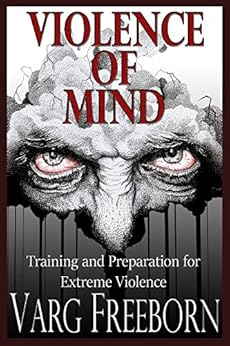I recently received this email from a student, relating an incident involving a potential robbery in a Home Depot parking lot. He’s given me permission to share his original email and excerpts from our discussion of it, with his name omitted.
Well, I actually had to use escalation/de-escalation verbal and physical skills yesterday, skill sets I’ve actually practiced from your courses.
I drove over to a nearby Home Depot to pick up a few replacement faucets for our kitchen and bathrooms. As I usually do, I prefer to park some distance away from the store entrance/exits (easier to get in/out of parking lot traffic and to avoid pedestrians) but not too far from the return cart receptacles.
Pulling up next to a green space, I noticed and man (mid 40s) eyeing me, smoking a cigar, and just loitering around as if waiting for someone; just seemed out of place. After being in the store for 20 minutes or so, I’m on my way out. I have to park the shopping cart in front of my truck as there isn’t enough room between it and the green space. Then that same man comes jogging up to me as I’m picking up the boxes and placing them in my truck.
Immediately closed my door and punched the keylock. Side stepped and extended my left hand with the a stop gesture. He started feeding me lines of how he was a contractor and wanting to know what I payed for faucets all while slowly kept creeping forward and reaching into my cart and foundling my newly acquired property. My cart is between me and him. I’m about 10 feet away. I gave him very direct verbal commands to back off, go inside and check things out yourself. Feeding me more lines (can I take pictures of their part numbers…let me help you carry these) and not dropping my property, I went into position one while verbally ordering him to back off and to get away. I quickly checked my six, noted a heavy set woman near my truck and in very hurried manner walking away. I went right at the guy, I slapped the boxes out of his hands with my left hand – he got the message then and walked off. Though I went to position one*, I never revealed my firearm.
He disappeared into the sea of parked cars. I let a minute or so pass by before proceeding again with the normal load up the merchandise and go home routine. Returning the cart, I caught eye of him again, this time sitting in a parked older junk Toyota sedan that has seen better days. There is, I believe, the same heavy set women I had noted when I checked six o’clock. There was two of them. Their body language, gestures, and faces informed me the she was emotionally upset and that he was very agitated. They both had that homeless person look about them, appearance, clothing. The back seat of their old Toyota was full of junk and he just couldn’t get the engine to turn over.
Back to my truck, got out of there ASAP, made sure I wasn’t being followed. I didn’t call the police because I never showed my firearm and he never acted aggressive. I’m 99% positive he was trying to distract me, pull me into conversation so his lady friend could quietly snatch and grab the items I had just placed in the back seat. My immediate actions of closing the door, hitting the key lock, side stepping, clear concise verbal and non-verbal actions, and the posture of position one all worked into my favor. For improvement, I should have checked six sooner for a possible accomplice – his oddball conversation did distract and held my attention too long. And I should have called the cops to make a report.
Living near and working within Houston, having a stranger approach you in a parking lot for a handout is about a twice per year event for me. I’m going to see if I can get access to security recordings, if possible.
I can say that your training regimen, without doubt, added to my ability to handle the situation.
*Note: “position one” refers to the start of the drawstroke, where a firing grip on the pistol is established while the pistol is still in the holster.
When I’ve had similar incidents occur, as soon as I was on the road away from the scene, I’ve called the non emergency police number (which goes to the 911 dispatcher) and reported the panhandling / suspicious person to the police, with a description. My response to him included discussion of how pepper spray might have been another option. His response:
I purchased Sabre Red some time ago based upon your class recommendations. However, I had it sitting inside the center console within my truck. I’ll be keeping it on my person as it may have been the better tool for this situation.
I’m actually going back to Home Depot this afternoon to pick up more plumbing supplies; I’m taking my time stamped receipt and will ask for the manager to advise them of the experience.
Having a couple of days to evaluate; I was never nervous – I don’t believe my heart rate ever accelerated. It just happened. I did lag a bit in my responses because in my mind I was debating with the “is this really happening…it can’t be happening?” kind of thoughts.
Our upcoming Personal Tactics Skills course is suitable for both armed and unarmed individuals. It teaches management of unknown contacts and interaction with strangers in public places, including around vehicles. That 3-hour class is one of the required courses in the Defensive Pistol Skills challenge coin program. The class will be indoors (mostly) in air-conditioned classroom the afternoon of July 27, 2019. This incident is a great example of why non-shooting skills are important and how they can be applied.
















































































